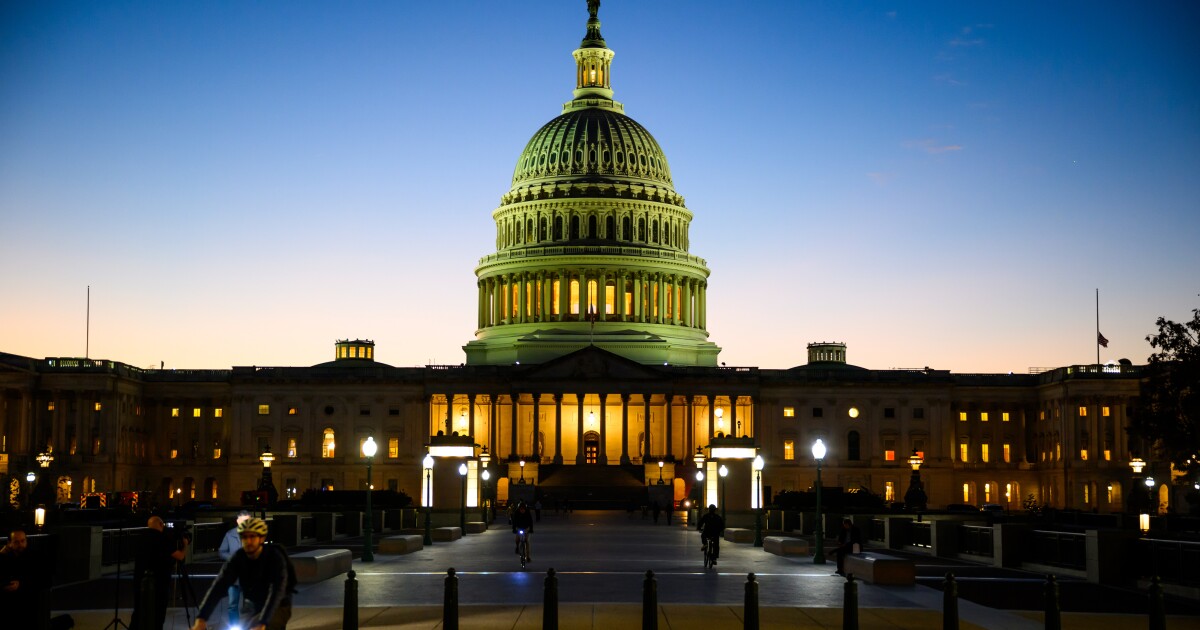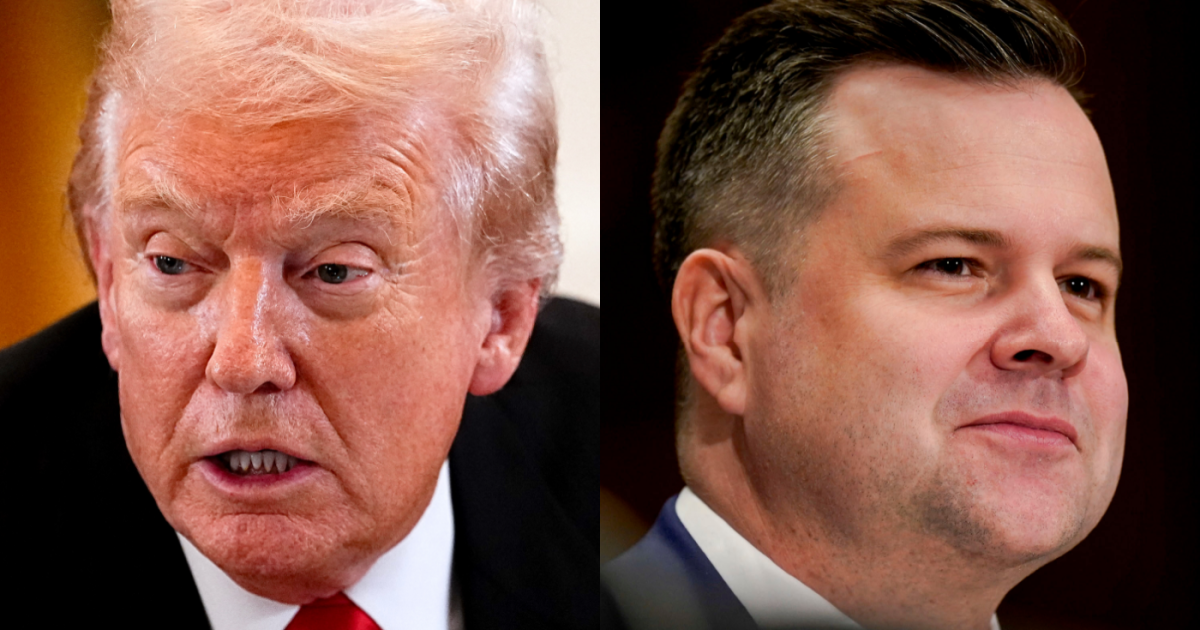
Hedge fund billionaire Bill Ackman is fueling more speculation about President Trump's suggested Fannie Mae-Freddie Mac merger this fall, but experts debate the near-term benefits.
The Pershing Square Capital Management CEO linked the concept to
According to reports, the government plans to sell 5 to 15% of the GSE shares at a valuation of $500 million, potentially
"A merger would enable them to achieve huge synergies both in their operations and in the trading price and spreads of their MBS, savings which could be passed along to consumers in the form of reduced mortgage rates," Ackman
Not all pundits agree with Ackman, the legacy investor in pre-conservatorship GSE shares, but there is some consensus his idea is worth evaluating in reform efforts.
A Pershing Square representative said Ackman would likely have no comment beyond his X post.
A path to GSE reform with potential efficiencies
Combining the two enterprises would have the additional benefit of reducing the costs and risks of their government oversight, Ackman wrote.
But his is by no means the only theory regarding Trump's post. Others think it could point to a public offering for
Bill Pulte, who heads the GSEs' regulator and conservator, recently
Clifford Rossi, academic director of the Smith Enterprise Risk Consortium at the University of Maryland and author of a recent report mulling a GSE merger, said he has long viewed
"In my opinion, that was the very beginning of an alignment that could eventually result in giving the opportunity to merge both of them," said Rossi, who also is professor-of-the-practice and executive-in-residence at the university's Robert H. Smith School of Business.
Pulte also generated merger speculation when he said in June that Fannie and Freddie will
Those moves led to more conjecture about a merger structure. Rossi said it's important to first consider whether the benefits of a combination are compelling enough to engage in one.
A key concern related to a GSE public offering is their current capitalization levels. The academic said a merger could strengthen them.
Ed Groshans, senior policy and research analyst at Compass Point, was more skeptical. The benefits of accounting adjustments due to a "merger of equals" would "at best, marginally improve the capital deficit," he wrote in a flash note.
"I guess they could do a merger of equals and exchange shares," he said in an interview. "I don't know how that's positive for the shareholders because basically, they wind up with a monopoly, pretty much, and they still have a massive regulatory capital deficit."
Rossi, who worked at the GSEs pre-conservatorship and at banks during the crisis that forced the Treasury to backstop them, is focused on a different reason for a merger. A combination could prevent the "race to the bottom" between the entities fueled by their loose underwriting to capture business.
He acknowledged the GSEs' underwriting reforms in past years, and Pulte's recent calls for industry competition that contradict a merger push. But Rossi's concerns that the GSEs would return to old habits outweigh that.
Would the merger raise or lower mortgage rates?
The merger proposal raises antitrust concerns.
"A lot of people say, 'oh, you know, you can't do that, because that's anti competitive, and competition will spur growth and innovation and so all these wonderful things," said Rossi. "I don't buy that. You're talking about a duopoly, a regulated duopoly at that."
The industry veteran also pointed to Ginnie Mae as a successful example of a single government entity in a section of the secondary market.
A combination public offering could rattle confidence in the guarantee the GSEs provide, potentially raising rates in the short-term. The Trump administration has pledged to keep their original implicit guarantee and not to raise rates.
"[Ackman] says that this new entity will reduce mortgage rates. He's in the minority and is describing the end result," wrote Jonathan Miller, president and CEO of real estate and consulting firm Miller Samuel, in a blog.
Miller said rates could eventually go down, but speculated Ackman referred to a long-term forecast. Trump's Truth Social image envisioned a November public offering.
Rossi said the merger could cut rates both ways: they could fall in line with Ackman's efficiency argument, or rise on the guarantee change, as studies have suggested.
Labor and cost is another hurdle. While Fannie Mae and Freddie Mac have similar business lines and systems, there are differences. Their existing JV has faced
Other hurdles and possible structures for a public offering
Pulte has a lot of leeway as the de facto GSE boss but would want to put merger plans through legal vetting, Rossi indiciated.
"The last thing we want to do is to say we're going to go down this path, only to find that only Congress would have the right to change those charters in a way that would allow a merger," he said, noting he would defer to legal experts.
Lawmakers may also intervene, according to Groshans.
"In our assessment, Congress would have to pass legislation to create the Great American Mortgage Corporation (GAMC)," he said in his note, referring to Trump and Pulte's suggested merger name. "A newco established by the executive branch would not be legally durable in our view. Congress established Fannie and Freddie."
While some look to Pulte's chairmanship of both GSEs and the departure of one CEO as pointing to a Fannie acquisition of Freddie, Rossi — who has worked for both enterprises — said it doesn't necessarily portend that.
"Perhaps the natural acquirer would be Fannie, but in trying to be as objective as I can, there are things that would give Freddie an edge. Fannie generally has been much more business oriented, and Freddie has been more 'hold the line' on risk management," he said.
Groshans said a structure involving one GSE buying another has a lot of complications.
"As for an acquisition, what does a company that is critically undercapitalized pay for another company that is critically undercapitalized? In these situations, the FDIC usually pays nothing and just takes over a failed bank," he said in his research note.
The Federal Housing Finance Agency could use its authority as receiver, not as conservator, to transfer the GSE charters to GAMC without Congress, according to Groshan. However this would be subjective restrictions negative for shareholders and likely for the government.
During the Great Financial Crisis that led to conservatorship, some M&A activity involved a "good bank/bad bank" division. But given the GSEs have largely cleaned up their books since then and have shown profitability, Rossi thinks use of that structure is currently unlikely.
"The only thing that I think you would have as a so-called bad GSE would be the legacy subprime that's still in runoff," said Rossi, who worked with banks during and post GFC. "They could ring fence it or something, but that's such a small portion of the business these days."
As far as the idea the GSEs might spin off their existing joint venture, Groshans told National Mortgage News, "That operates like a public utility. If it becomes a for profit company that would have to generate economics, and that could lead to a higher mortgage price."
However it is structured, the proposed public offering is unlikely to cause a near-term solution for two key interrelated challenges the GSEs face: their regulatory capital defect and the Treasury's conservatorship ownership stake, he said.
"Let me be clear, because there are a lot of people out there with a lot of views: $30 billion doesn't solve these problems, not unless we're going to change the capital requirements," Groshans said, noting that such a rule change would be a lengthy process.
Investors may not want to read too much into the recent jump in the GSEs' stock prices following President Trump's sparse post.
"And as things stand today with the GSEs being in conservatorship and having massive regulatory capital deficits, barring some larger change in the structure of the GSEs, I wish Treasury Secretary Scott Bessent good luck on raising $30 billion," Groshans said.
Groshans said there are still good odds that an eventual
"We have a pathway where the GSEs can be recapped and released from conservatorship, and we address the regulatory capital deficit and the Treasury ownership position," he said. "When you bring a new entity to the forefront called the Great American Mortgage Corporation, not Fannie or Freddie, what does that mean?"



